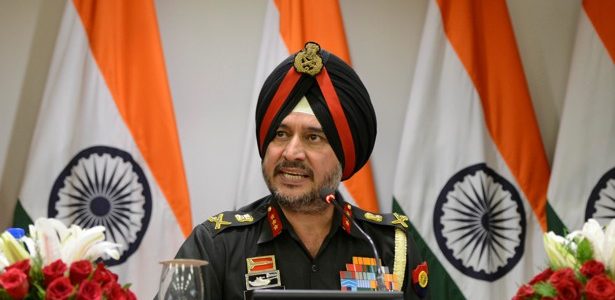The Military Operations Directorate of any army is responsible for devising and planning operations and campaigns in line with the directives given by the Army Chief. It is headed by the Director General Military Operations (DGMO), a prized appointment for any officer with stars on his shoulders.
The DGMO is expected to be well versed in the nuances of the military at the tactical, operational and strategic levels of war. Needless to say, he knows the type of attacks, the strength of the enemy and the theatre of war and operations.
Like all armies, arch rivals India and Pakistan both have their DGMOs. While Pakistan has a two-star General at the helm, India appoints a three-star General as the spearhead of the MO directorate.
On Thursday, the Indian DGMO, Lt Gen Ranbir Singh announced that the Indian Army conducted a ‘surgical strike’ on ‘launch pads’ in Pakistan along the Line of Control(LoC). The statement was met with jubilation all across India as it was taken at face value and common Indians felt that Pakistan was given a befitting response after its alleged involvement in the Uri attack.
The Indian Army did not provide the details of the operations and hence many questions remained unanswered. The Pakistani military denied the occurrence of such an attack and with video evidence showed that Indian shelling was responded effectively.
As soon as the news came out, many military minds started to question its veracity. This is so because the ground conditions did not match with the concept of surgical strike taught in various military institutes all over the world, including the National Defence Academy, of which General Ranbir is an alumnus.
Let us shed light on the concept of a surgical strike to try to understand the likelihood of its consummation ‘along the LoC’.
As the term surgical suggests, it is a precise military attack on just a legitimate military target. It is usually conducted by air and/or special forces. The idea is to only engage a military installation with surprise and an element of secrecy. Such strikes are usually carried out to pluck out particular targets and hence require a perfect ISR: Intelligence, Reconnaissance and Surveillance.
Now let us dissect the anatomy of this operation as given out by the media in light of the above-mentioned definition and also the principles of night attacks.
According to the media, Indian forces carried out surgical strikes along the LoC and destroyed terrorist launch pads. It was reported that they did not contact Pakistani forces and came back unhurt. However, no helicopters were used to land and pick troops.
This rules out two aspects from the very outset which do not match the concept of a surgical strike. One is that no special forces were involved, since crossing a heavily fenced LoC and entering a heavily mined forward defended locality is a remote possibility without helicopters. Secondly, due to the fact that forces are deployed on both sides of the LoC, the only legitimate military targets are bunkers and outposts of the Pakistan Army, something which the Indians did not claim to have destroyed.
The question of the presence of launch pads being located right in front of a deployed Indian forces defies military logic and if this was the case, then they would have regularly targeted.
Surgical strikes can also be conducted by guided missiles, something which the Indian military has thus far not claimed to have used. The mismatch is conspicuous by our deconstruction so far.
Now let us look at the basic principles of night attack and see if it stands to logic that the Indians troops did not contact their Pakistani counterparts.
It is common that if the obstacles are to be crossed or the enemy defences are strong, the latter being the case on the Line of Control, attacks are usually noisy with massive fire support. A silent night attack does not go well with the deployment and defence patterns along the LoC. Hence, contact with the Pakistani troops was a given. Moreover, on a heavily fenced border, recce which is the essence of the preparatory stage is untenable.
It would not be wrong to say that LoC is certainly not the place to carry out a classical surgical attack. Since even the legitimate targets were not attacked, the claims by Lt Gen Ranbir are not based on military realities of the Line of Control. The UN, in a latest statement, also alluded to a dichotomy between the term used and the situation on ground.
The military contact was a classical ceasefire violation, which is a norm. It was responded to in a calibrated manner at the tactical level. Military terminology, logic, the terrain and posturing on the LoC all hint towards it being a debacle in an attempt to instigate Pakistan into a military adventure to shift the burden of escalation.
